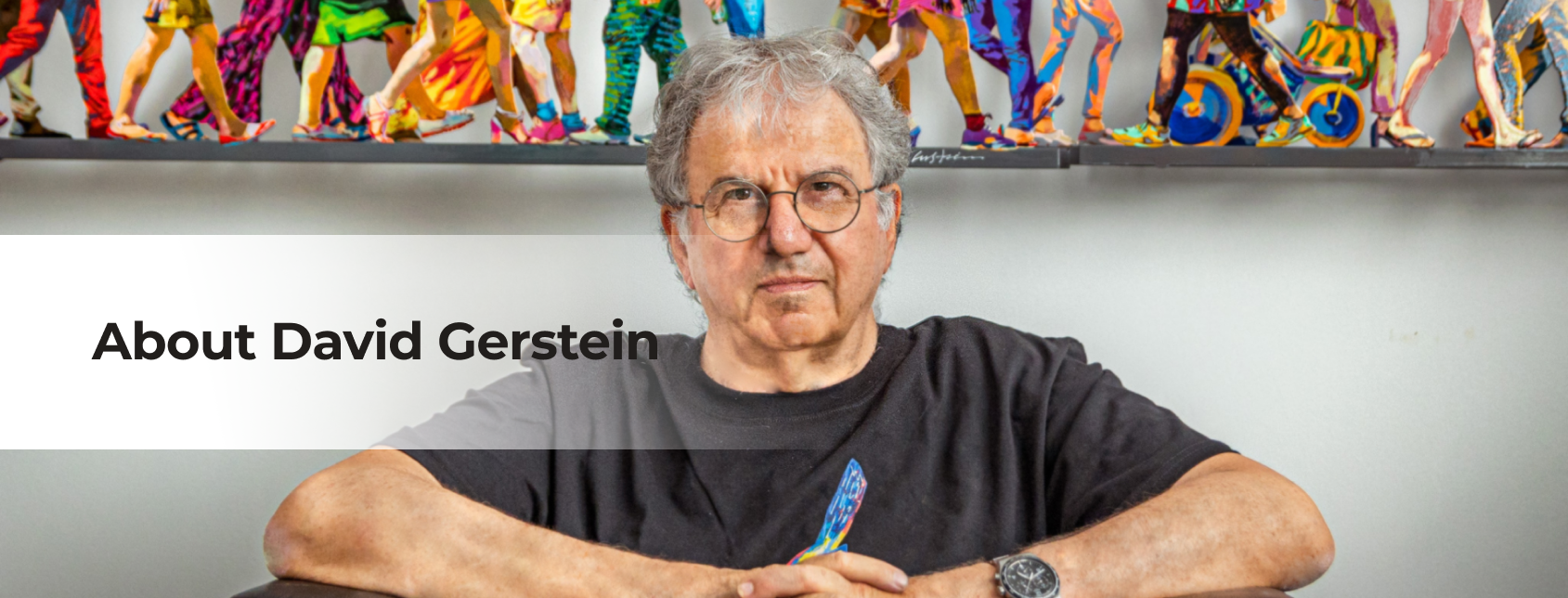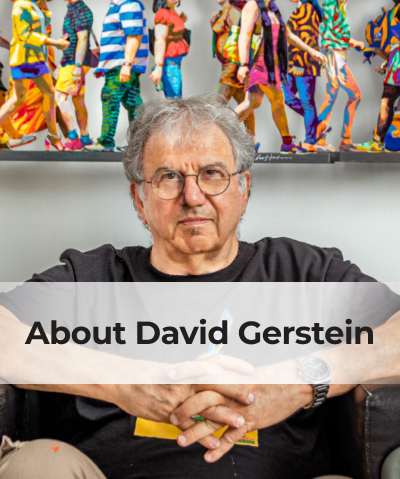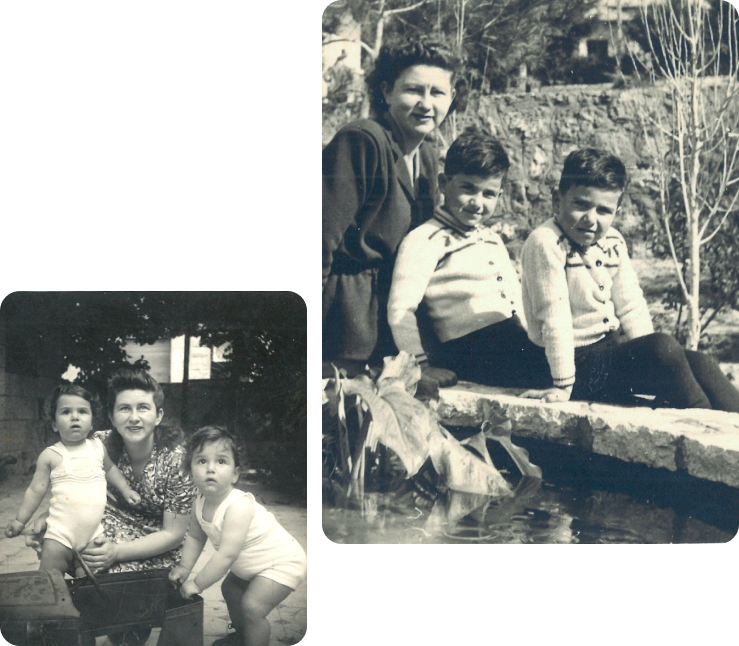
David (Dudu) Gerstein is an Israeli artist whose wide variety of works express movement, color, sound, and emotions all while capturing unique moments in time. Born in Jerusalem in 1944 to immigrant parents along with his identical twin Yoni, Gerstein was part of a generation of hope, freedom, and renewal. Although of modest means Gerstein grew up around crafts as his father, and father before him were leather makers. Still, many decades later Gerstein accredits his interest and curiosity of cutting up shapes and figures in wood and metal to his times as a child when he would help out his father cutting leather.At the age of four, Israel was declared a state, and the Gerstein family moved to Ramat Gan on the outskirts of Tel Aviv. Throughout his adolescence, David Gerstein, or as he became known as Dudu, continued to work with his dad while immersing himself in other forms of art; painting streetscapes, landscapes, and people. Together the twin brothers grew to appreciate and inspire one another artistically and this mutual growth was a strong driving force behind Gerstein's early artistic endeavors.

Planting the Seeds of artistry
In 1965 Gerstein moved back to Jerusalem to study at Bezalel Academy for one year. Striving for more, he felt that the Israeli art scene was negligible to that of Europe at the time. Subsequently, he moved to Paris to study at the Ecole Supérieure des Beaux-Arts, deliberately following his brother who had already been studying there for two years. After two years of learning the most classical and traditional painting techniques, Gerstein again felt confined by the spirit of traditional arts in Paris and was drawn to New York City, the forefront of the modern art world. In 1968, Gerstein left the idyllic, romanticized, and avant-garde Paris for the buzzing pop art and abstract expressionism of New York City. There he studied at the Arts Students League in New York while further developing his skills and artistic visions. While many of the current artists around him were focusing on conceptual art Gerstein wanted to create art that would "speak to the audience at eye level." Art that is approachable and relatable. Art that is universal, diverse, and most of all accessible to the masses.

An Artistic Risk
In 1971, Gerstein returned to Israel with new ideas and inspirations. He immediately began to teach at Bezalel Academy while furthering his own artistic concepts. Turning away from the increasingly popular minimalistic style, Gerstein took a risk to create art in his own way. This was also the year of his first solo show in the Engel Gallery in Jerusalem.At the time many Jerusalem artists were choosing to go political with their art, but Gerstein still wanted to create relatable and engaging art. Focusing on his own narrative and drawing inspiration from his own life in Tel Aviv and Jerusalem. Many of his subjects seem to play out stories of people living their lives, biking to work, watering their flowers, and watching birds from their window sills, this was what he had been seeing since childhood and the subject matter of his life. Despite the criticism for not following popular subjects such as politics, Gerstein held onto his integrity as an artist and proceeded to carry on painting subjects that were considered ‘mundane.’ At the time Gerstein’s paintings remained 2-dimensional and the color palette was monochromatic.
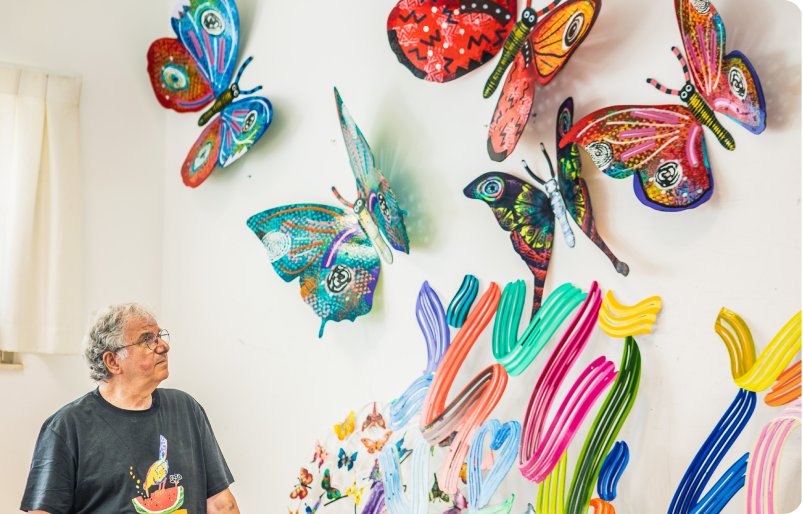
Creative freedom
By 1981, Gerstein had his first international solo exhibit in the Albert White Gallery in Toronto and continued to exhibit as an international solo artist every year after. Throughout the 1980s Gerstein's works began to shift as he would reimagine similar themes but paint them in more vibrant, design-oriented colors. Intrigued by other artists, such as Frank Stella, taking on a lively range of dramatic kaleidoscopic colors, Gerstein began to reflect on his own works as being somber, gloomy, or even morbid. Challenging his work Gerstein took a dramatic shift, not just in the color palette, but moving into 3-dimensional work as well. It started with cut-outs in cardboard and wood and then aluminum and steel. Similar to the leather that he would cut as a child, these shapes began to take on the forms of people, animals, flowers, and objects. Over time they developed into complex scenes with each cut-out painted and then overlapping in space. One of his first shown works from this new style was a series of cats which received an enthusiastic response from curators, agents, and audiences globally.
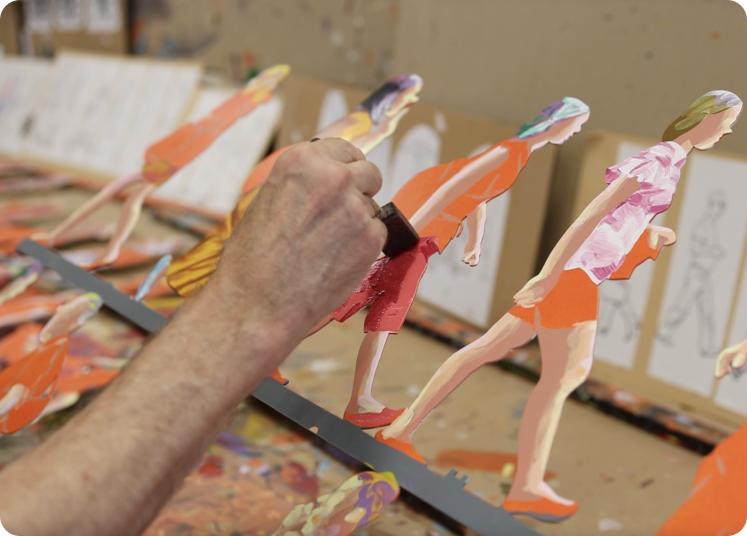
Exploring the World of 3D Art
It started with cut-outs in cardboard and wood and then aluminum and steel. Similar to the leather that he would cut as a child, these shapes began to take on the forms of people, animals, flowers, and objects. Over time they developed into complex scenes with each cut-out painted and then overlapping in space. One of his first shown works from this new style was a series of cats which received an enthusiastic response from curators, agents, and audiences globally. These new sculptures took on immediate success and over the following decade continued to develop between figurative and abstract, between brighter and mundane, and across a multitude of materials. By the 1990s, Gerstein was creating the bold and radiant works that he is now recognized for worldwide. This was also a time of major transformation in his artistic process. Laser-cut technology became widely available in the ‘90s as more high-powered lasers were on the market, and this allowed Gerstein to create sculptures in larger series. With the shift to laser cutting Gerstein was able to focus his work on creation, pioneering contemporary art techniques, obsessively drawing and painting, and putting all of his energies into the creative process.
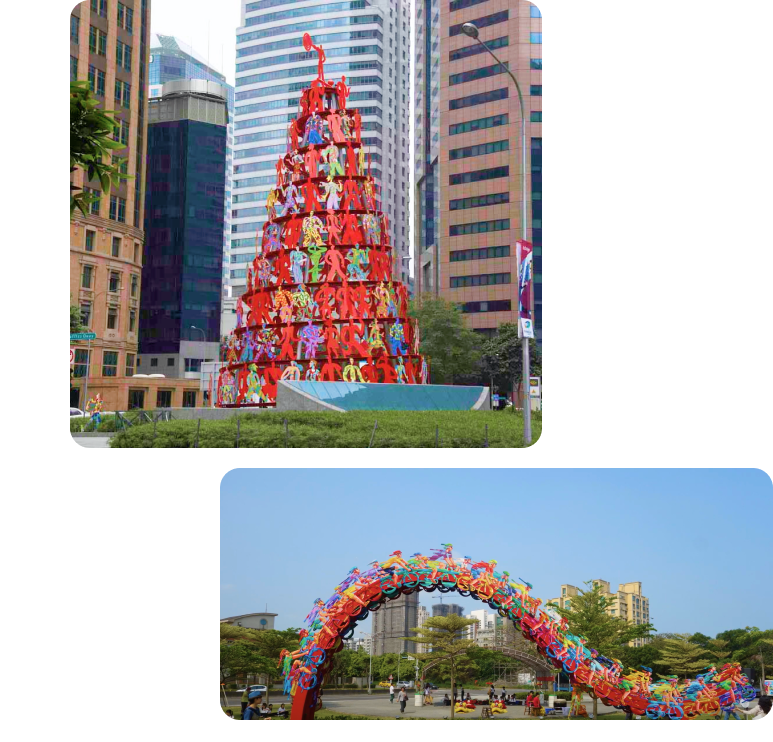
Post Pop Art
At first, he began working with single-layer cutouts and painted these with bright, glossy industrial paints, mostly based on primary colors. This is when Gerstein’s iconic style, appropriately titled Post Pop Art, truly started to develop. Post Pop Art distinguished itself during this period by radiating bright colors and exuding a sense of joy and euphoria. It is characterized by the feelings it emotes, the contrasting color palettes, and the popular images, but differs from pop art in that there is no ambiguity.His works intend to brighten cityscapes, towns, and homes by bringing scenes of joy bursting with life and imagery from nature. The pure bright colors emote feelings of happiness, talking with the audience as well as the environment in which they are situated. Gerstein’s vast body of work includes many outdoor sculptures in cities around the world, including Momentum, an 18.5 meters high sculpture in Singapore’s business district, which is considered the tallest sculpture in Singapore.
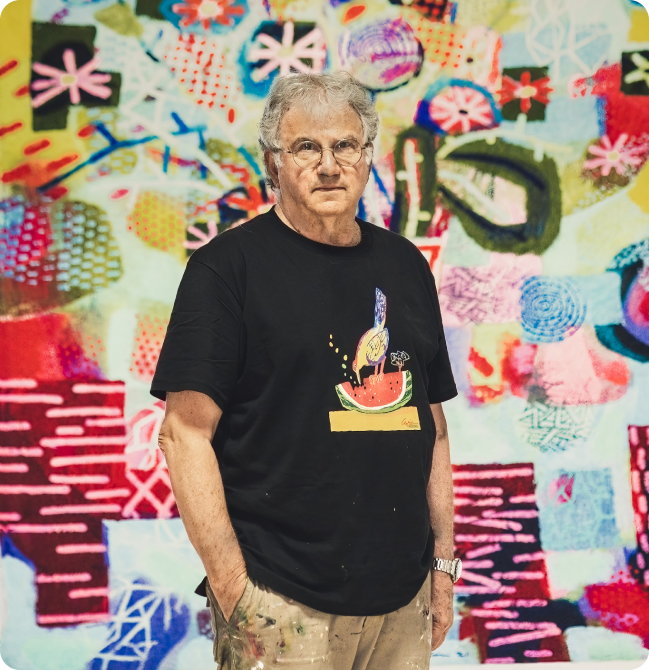
Artistic Revolution
Gerstein aspires to create art that is accessible and speaks to a large audience. Just like how a brightly colored flower attracts an insect the artist chooses brightly colored paints to attract and uplift people. Despite push-back, he continues to curate his own works through his benevolent point-of-view. He even started a collection of miniature sculptures stamped with his design logo to allow a wider range of people to access fine art. Thereby breaking boundaries by surpassing the frontiers of accessibility in art.Today Gerstein continues communicating through art and contributing to culture through his growing collections of wall-sculpture series, miniatures, public projects, and more. His studio sits between Tel Aviv and Jerusalem overlooking the green hilly landscape of the area. The many levels house his vast collection of works ranging from early oil paintings to today's more vivid ones. As well, it is an assembly for artistic souls with his workshops massing over four stories of painters, printers, metal workers, and all sorts dedicated to producing Gerstein's artistic visions.

